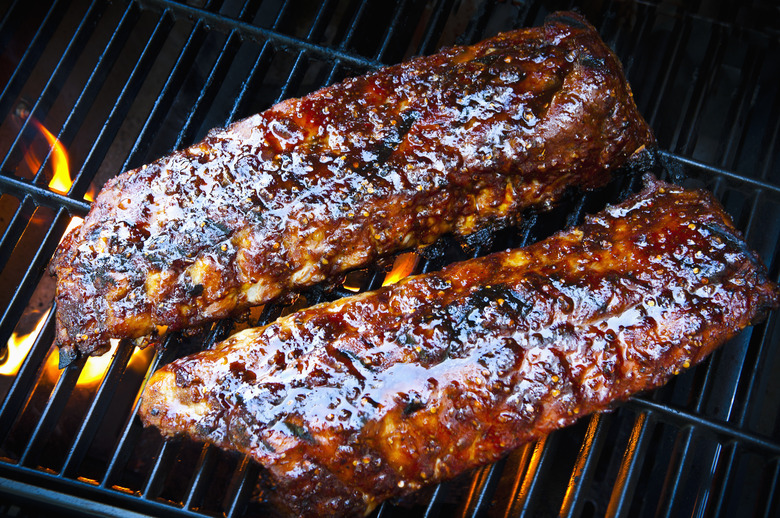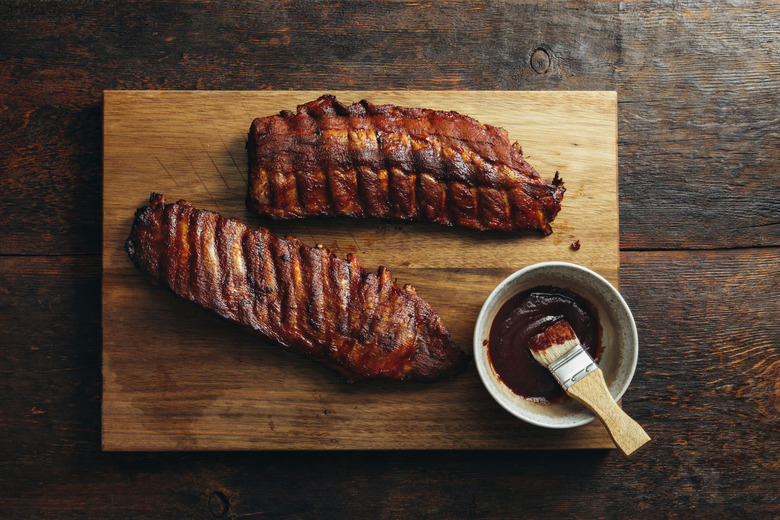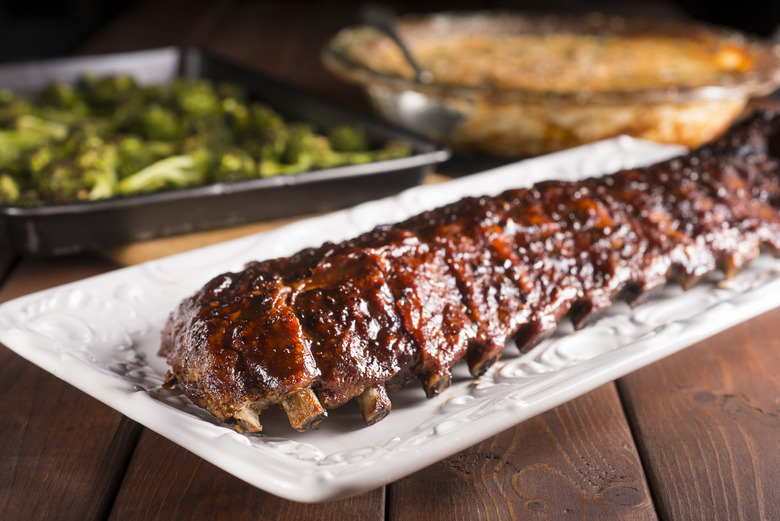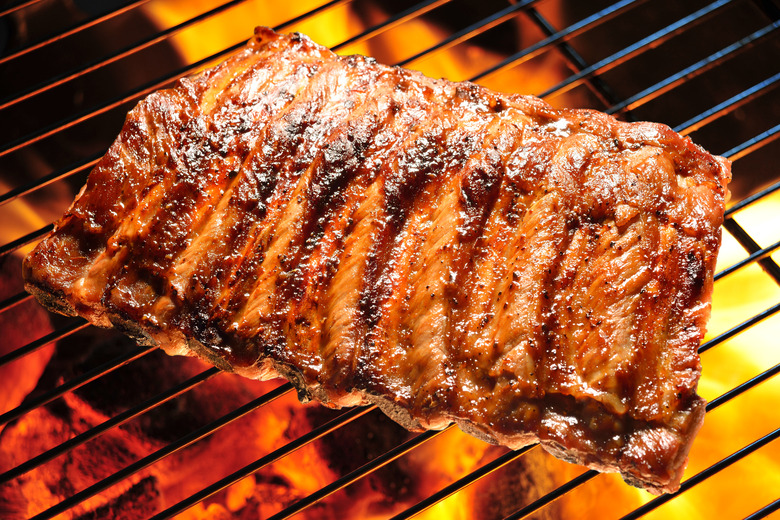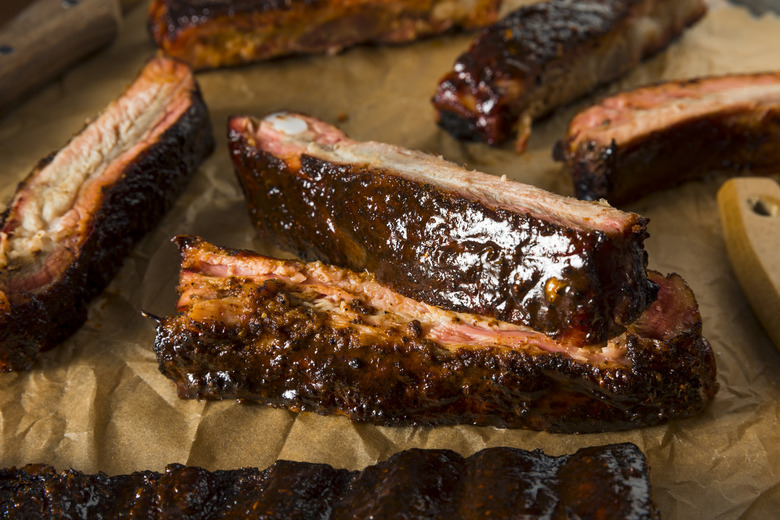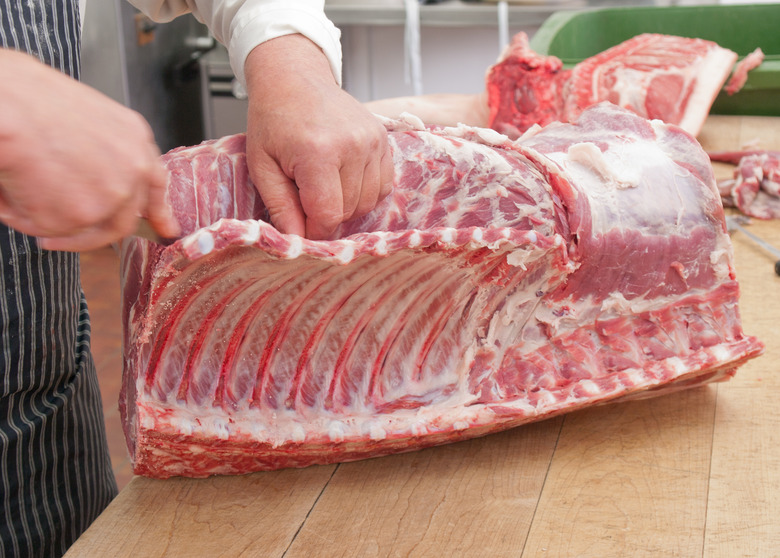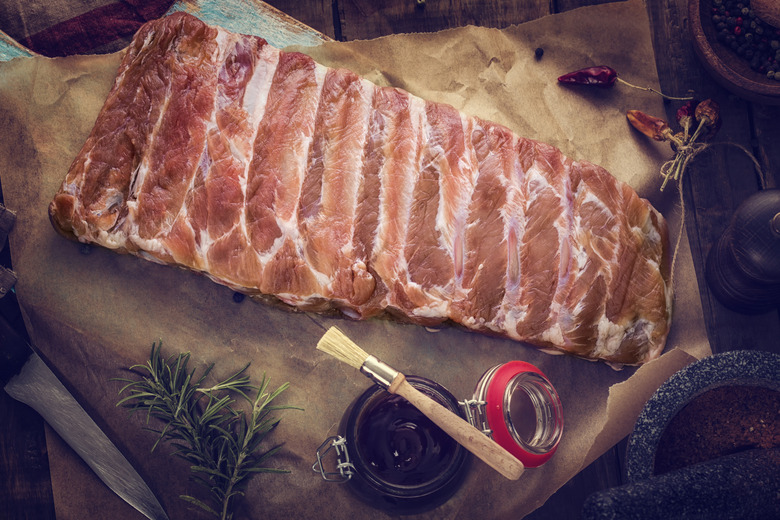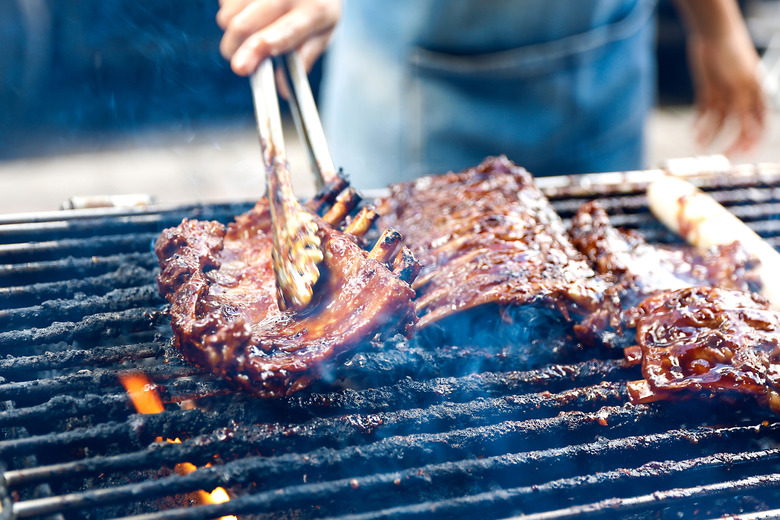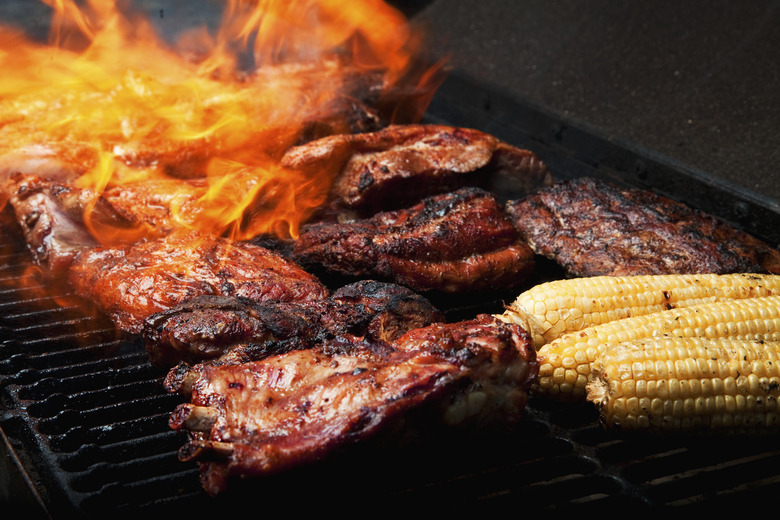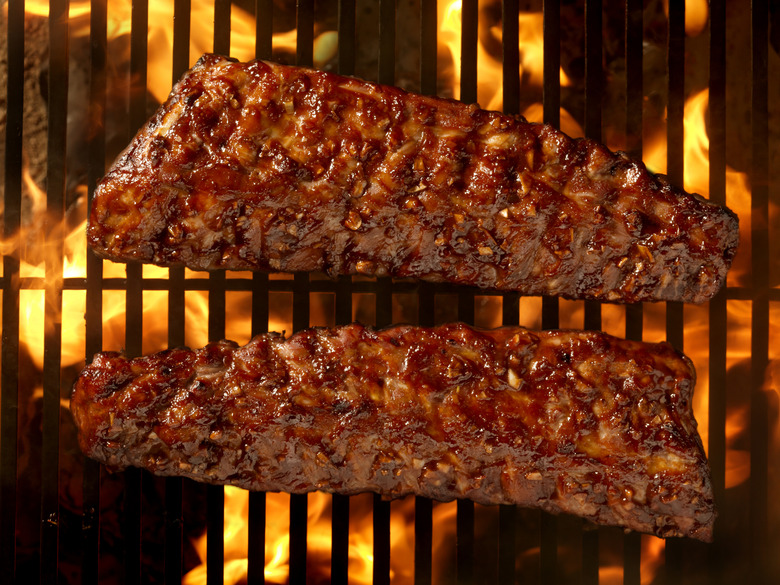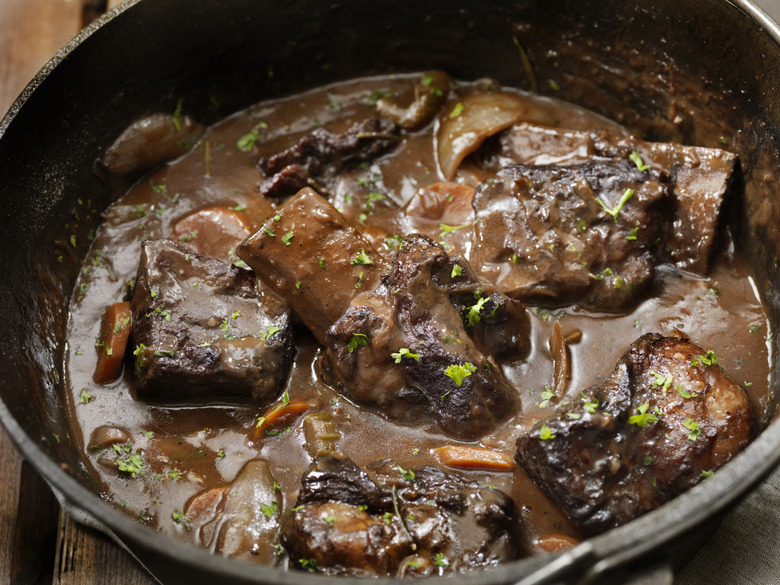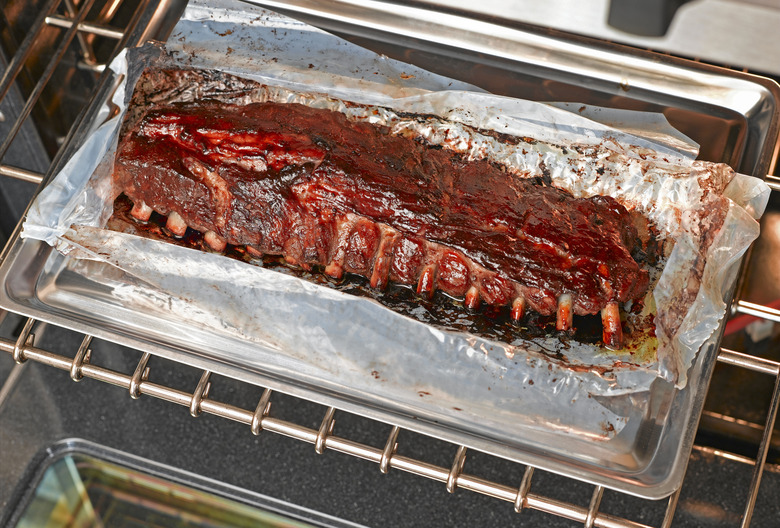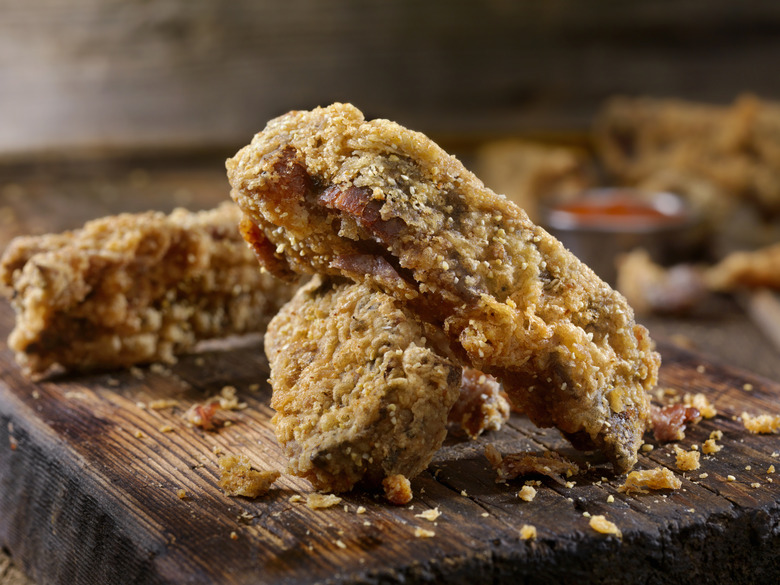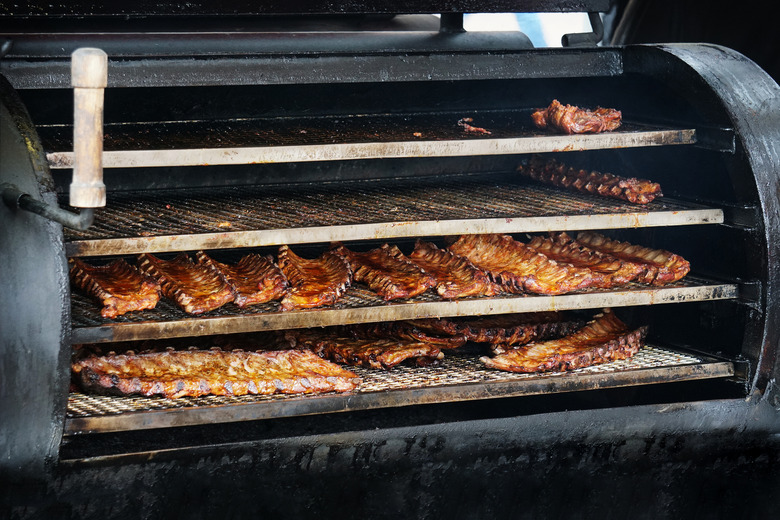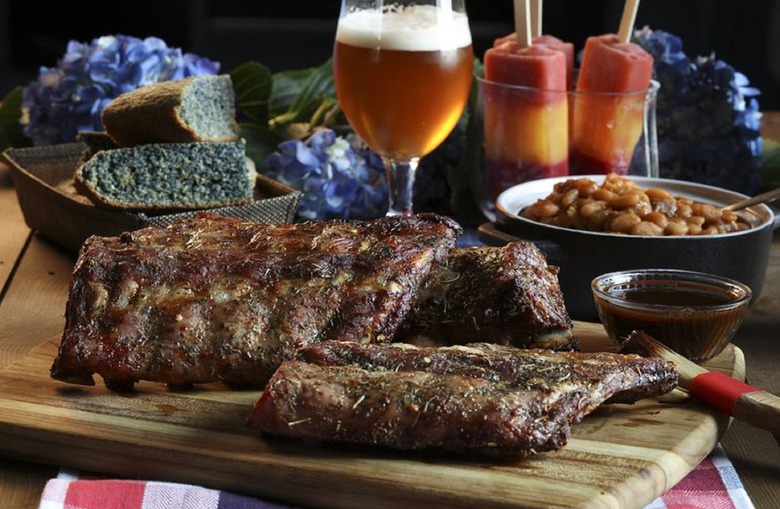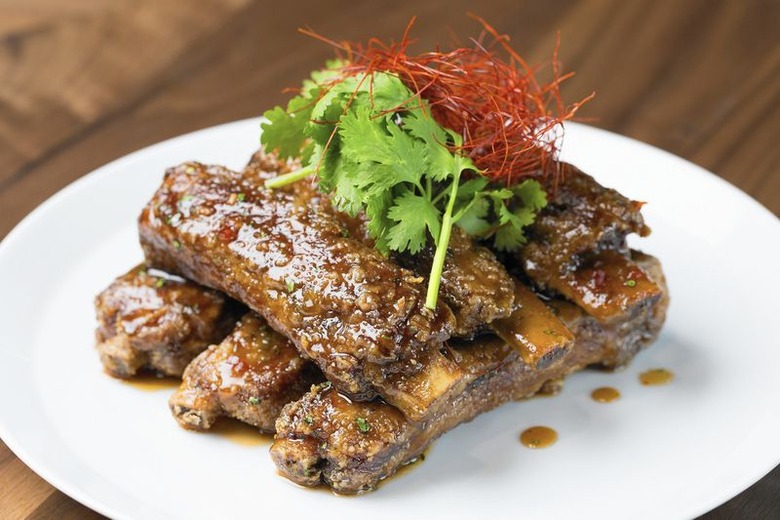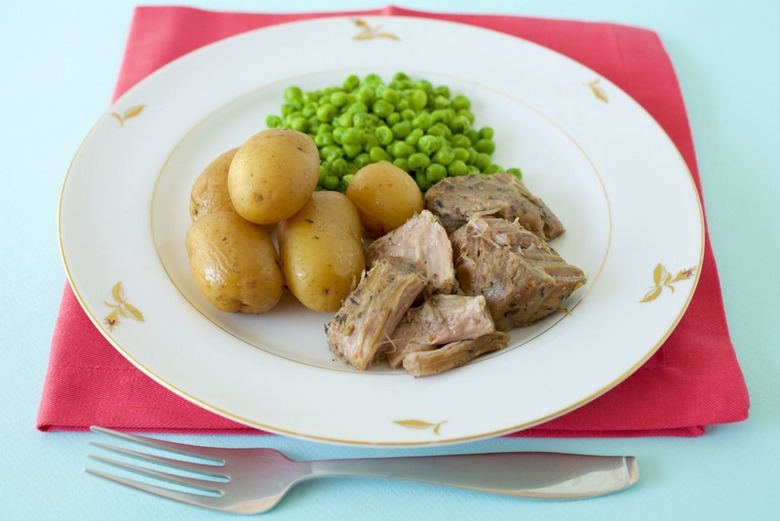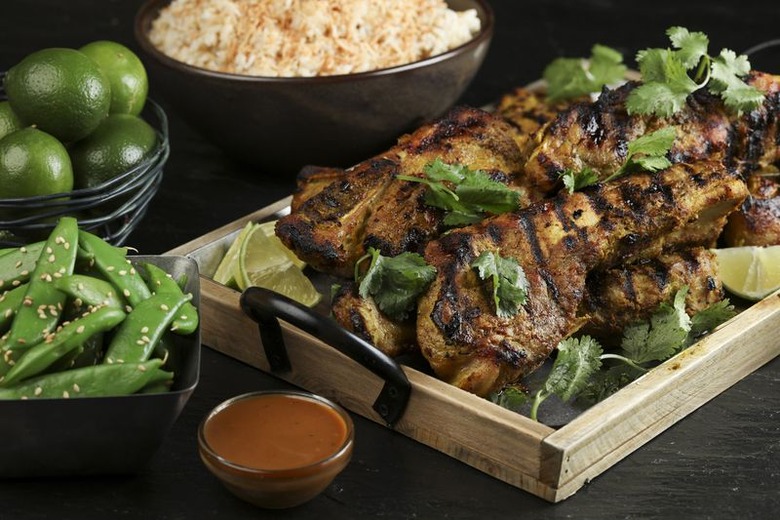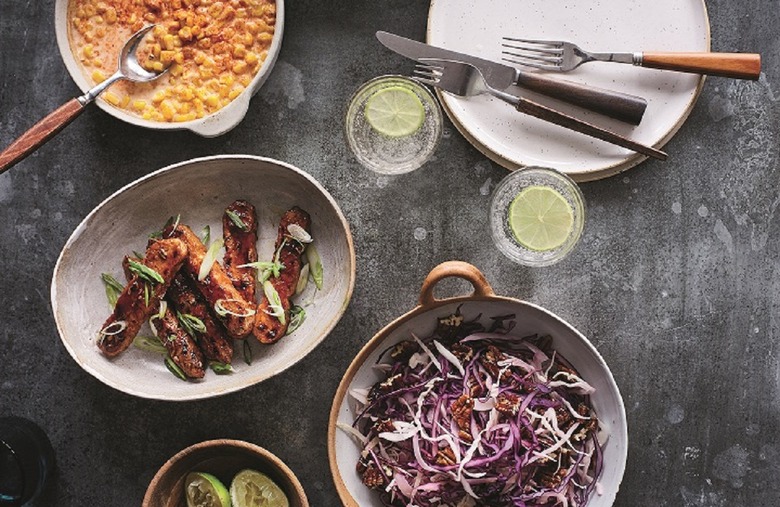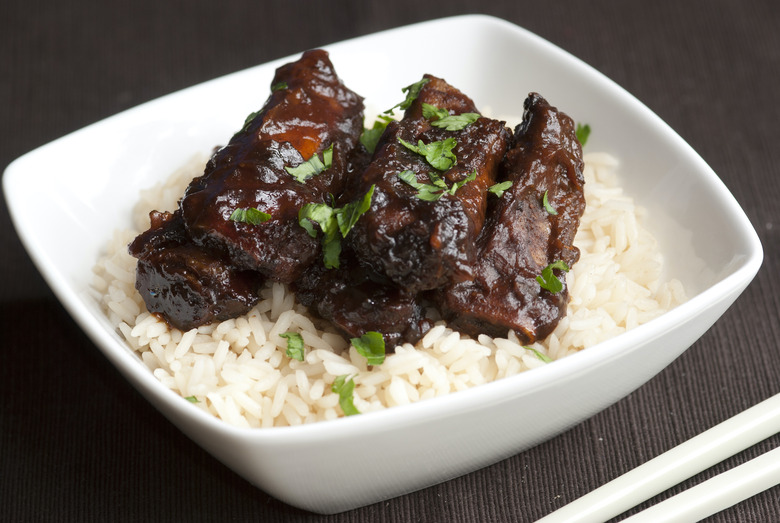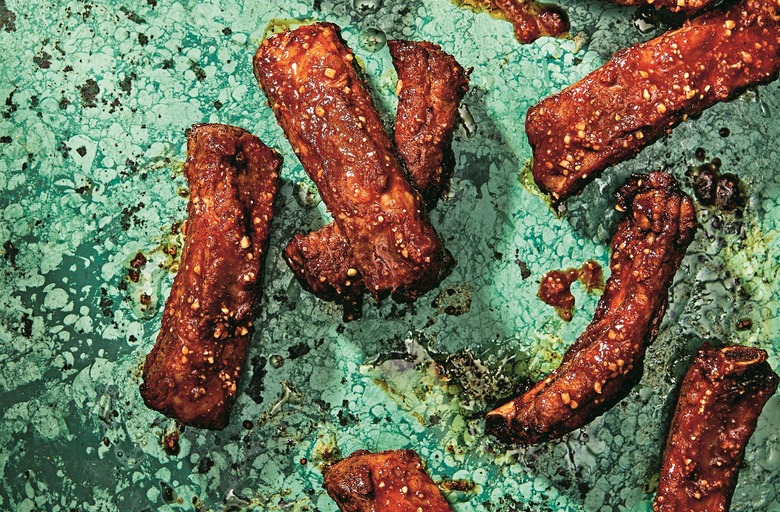How To Buy, Cook And Serve The Best Ribs Ever
When it comes to summer barbecues, a rack of ribs sizzling on the grill is a must. But how much do you really know about ribs other than, well, that they're delicious? There's more to ribs than you may think.
Everything You Need to Grill This Summer
There are different styles of pork ribs, including baby back ribs, spare ribs, St. Louis ribs and more — though some may be more popular than others depending on the region. When buying ribs, make sure the meat is fresh and you have enough to feed everyone at your cookout. The way you cook ribs can vary so if you don't have a grill, you can still make juicy ribs in your oven, slow cooker and more. Here's everything you need to know about choosing and cooking prok ribs along with some of our favorite rib recipes to get you started.
The differences between types of ribs
Before you go shopping, it would be helpful to learn which cut of ribs you're looking for. Each style of rib has its pros and cons, and the best rib for you depends on your meat-to-bone ratio, preference for fatty or lean meat and budget.
Baby Back Ribs
Also referred to as back ribs or loin back, baby back ribs are taken from the center of the pork loin or the muscle that runs along the pig's spine. The "baby" part comes from the ribs' appearance; the bones are short, compared to spareribs. Baby back ribs have a lot of meat on them but tend to be leaner.
Spare ribs
Spare ribs are from the belly of the pig and are larger, more fatty and meatier than other ribs. This flavorful style of rib is best when cooked slowly at low temperatures.
St. Louis Ribs
St. Louis ribs are spare ribs with a few modifications. The chewy cartilage, sternum and rib tips are all removed from the St. Louis-style cut and then the ribs are shaped into perfectly uniformed rectangles. St. Louis ribs have less meat than baby back ribs but contain a lot of fat, which equals more flavor. This cut is flat and easier to use for recipes that require browning.
What to look for when buying ribs
The best place to buy ribs is your local butcher shop, where you'll have access to fresh cuts of meat instead of pre-packed packages at the grocery store. Choose a rack with an even layer of meat on it. Sometimes there might be a slab with more meat on one side and little to no meat on the other, which can lead to uneven cooking.
Carefully examine the meat before buying
Always give any meat that you buy a closer look before heading to the register. You're looking for vibrant pinkish-red color and some marbling in the meat. Avoid ribs that look pale or have dark spots on the fat.
How many ribs to buy per person
Now that you know what to look for when buying ribs, the next question is how many racks of ribs should you buy? That depends on the type of rib you buy and how many people you plan on feeding. Of course, appetite can also play a factor but in general, you should buy 3/4 to 1 pound of pork ribs per person. If you're going with spare ribs, one slab can typically feed about three people; a standard rack of baby back ribs can feed about two people.
How to cook ribs
There are several ways you can cook ribs — each style can modify the flavors and texture of the meat. But first, it's important to prepare the ribs before cooking by patting them dry and removing excess fat. For spareribs or baby back ribs, remove the silvery membrane from the bones of the ribs. This membrane can prevent the ribs from absorbing any flavor, especially if you're grilling.
How to grill ribs
Grilling ribs is perhaps the most popular way to cook them. Consult our guide on how to grill ribs for details since the exact method depends on whether you are using charcoal or gas. Need a visual? Check out our video on how the Winningest Man in Barbecue, Myron Mixon, grills ribs.
How to braise ribs
You don't need a grill to braise ribs, making it a great technique for apartment dwellers and beginners. Though most commonly applied to beef short ribs, pork ribs can be braised as well. First, trim excess fat and season them however you like (feel free to follow this Braised Boneless Beef Short Ribs recipe).
Sear the ribs in a Dutch oven with oil until browned. Then, add a broth of your choice, red wine, fresh herbs and vegetables. Let everything cook in the oven at low heat until the ribs are tender. If you don't have a Dutch oven, use a pan to sear the ribs and a slow cooker to finish the cooking process.
How to bake ribs
Baking is another easy way to cook ribs. Preheat your oven to 275F, then add 1/2-to-1 inch of water to the bottom of a roasting pan. This will help add moisture to the ribs while they're baking and prevent the meat from turning hard and dry. Place your seasoned ribs on top of the boiling pan and let them cook in the oven for about 2 hours or until tender.
How to fry ribs
Frying ribs is fairly simple. You can use either a deep cast-iron skillet or a countertop deep fryer. To make sure the oil is ready for frying, use a deep-fry thermometer. The heat should be around 370F. If you don't have one on hand, throw in a little bit of flour or a small piece of bread in the oil. If it sizzles, it's ready for the ribs. Fry the ribs until browned on all sides and then transfer to a wire rack or paper towel to let them cool and drain the oil. Coat the ribs in any barbecue sauce you desire.
How to smoke ribs
If you decide to smoke your ribs, you can either use a smoker or a smoker box inside the grill. Use the 3-2-1 method to smoke the rib directly on the rack for three hours at 225F. Then remove the ribs and tightly wrap them in aluminum foil with a liquid, like apple juice, beer or wine to help tenderize the meat. Put it back in the smoker for two hours. Remove the ribs once more to add any barbecue sauce on both sides of the ribs and let them cook in the smoker for one final hour.
Herb-rubbed Baby Back Ribs
Grill these perfect baby back ribs rubbed with a homemade herb blend of dried thyme, oregano, rosemary, black pepper and more. These ribs are so packed with flavor, no sauce is needed.
Sticky Spare Ribs
These spare ribs boast a sweet and sour flavor. The ribs are braised, then fried to get a crunchy exterior and moist interior before being tossed in a sticky sauce made with sweet chili sauce, sugar and soy sauce. Be sure to have plenty of napkins on hand!
Slow Cooker Pork Ribs and Idaho Potatoes
Don't have a grill? No problem. You can make ribs in a slow cooker. Just add a blend of spices, stock and potatoes. Then let the slow cooker work its magic for this one-pot meal.
For the Slow Cooker Pork Ribs and Idaho Potatoes recipe, click here.
Thai-style Grilled Pork Country Ribs
Add a little Asian flair to your ribs with this Thai-inspired recipe. Rather than traditional American barbecue sauce, serve these with a sweet-and-spicy peanut sauce on the side.
For the Thai-style Grilled Pork Country Ribs recipe, click here.
BBQ Tempeh Ribs
Vegans and vegetarians don't have to miss out on ribs this summer! Plant-based tempeh is used in place of pork ribs in this dish. Serve with creamed corn, a sweet slaw and your favorite potato salad recipe.
Hoisin and Garlic Country Ribs With Napa Cabbage
Get tender, fall-off-the-bone ribs with this slow cooker recipe, which has an Asian-inspired marinade with hoisin sauce and black bean sauce. Cut some of the saltiness in the ribs by serving with cabbage and one of these no-cook side dishes.
For the Hoisin and Garlic Country Ribs With Napa Cabbage recipe, click here.
Thai Glazed Ribs
Learn how to cook like Pepper Teigen by making these Thai-inspired ribs at home. This deep-fried recipe is perfect if you don't own a grill. Deep-fry the ribs until they are brown and toss them in a tamarind glaze. If you fall in love with this recipe, it's definitely worth it to try making more Thai and Thai-inspired recipes.
For the Thai Glazed Ribs recipe, click here.
More from The Daily Meal:
Every Cut of Steak You Need to Know
50 Things You Need to Eat, Drink and Do This Summer
The Best Dishes to Bring to a Party
No-Cook Side Dishes for Summer Barbecues and Weeknight Dinners
